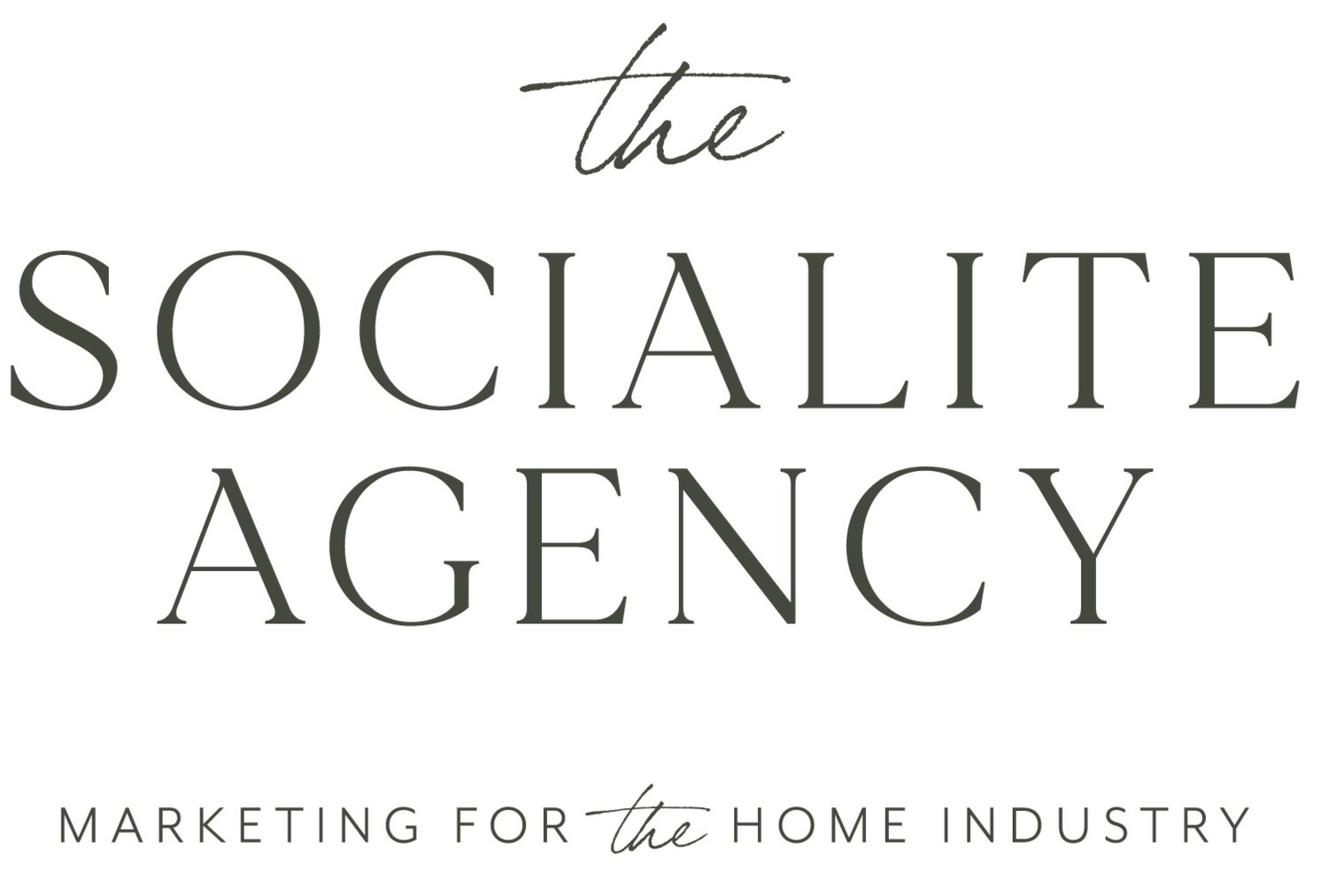These Marketing Strategies Don't Work for Interior Designers
Do you struggle with how to price your services as an interior designer, home stager, window professional, or pro organizer? The real issue isn't how to price, but instead how to take control of your perceived value and marketing strategies for your interior design, home staging, window treatment, or organizing business. Perceived value is another way of stating "how valuable you appear to be" to a potential client.
You can charge clients whatever you want — successfully — if your perceived value matches or exceeds the prices you set. If you position yourself as the perfect solution to all their home woes, you'll be able to more easily attract and connect with clients who are more than willing to pay your rates.
However, the majority of home professionals are shooting themselves in the foot when it comes to making their businesses appear valuable to clients. Remember this: Your clients don't generally base their decision to hire you on your pricing, but on how you make them feel and on how well they think you'll serve them.
Are you making any of the top nine mistakes that are damaging your perceived value as a professional? Let's find out.
9 Devaluing Marketing Strategies Interior Designers and Other Home Pros Shouldn’t Use in Front of Their Clients
While I see these mistakes being made mostly by newer designers and home stagers, I've also seen more experienced professionals making at least a couple of these business faux pas. In short, it hurts the profitability of a business.
If you've been in business for a decade and still struggle to make a profit, one of these mistakes might be contributing to your struggle. If you've been in business for 10 minutes, you're liking going to struggle with most of these issues; consider this your warning to avoid as many as possible.
9 Things Home Professionals Do to Hurt Profitability in Their Businesses
#1: Passing your trade discount through to your clients.
Major cringe! Interior design business coaches, like Michelle Lynne, state clearly that you should be marking up every product you sell. Passing through a discount constitutes a poor business decision for several reasons:
You are limited to only charging for your time. Since there are only so many hours you can work, you're putting a tight and low ceiling on your income. Plus, you're hurting your own quality of life. Without markups, you can do nothing but trade hours of your life for dollars in your bank account. That business model isn't scalable, and it's the fastest road to burnout.
"But my clients won't pay that," you might say.
If your clients balk at real interior design, staging, or organizing pricing, they aren't your clients. Offer them a lesser level of service or pass on the project entirely. Many interior designers have expressed deep regret over accepting a penny-pincher client. Those clients are looking for discounts. You're offering a discount. That client will have you working more hours than you'll bill and you won't even have product markups to help create some sort of profit margin.
In short, those clients aren't worth it! If you struggle to get clients who don't have sticker shock, you are likely attracting bargain hunters exclusively and need to reevaluate how you've branded and marketed yourself.
#2: Charging your clients "design fees only."
This problem goes hand-in-hand with not adding a markup to your products. Your product markup, according to professional design coaches, should be around 42%. I'm not a business coach and suggest that you work directly with one if you aren't sure how to increase your margins appropriately.
#3: Trying to compete with retail product prices.
I've seen a few newer home professionals get frustrated when their clients say things like, "I can get that same sofa from Pottery Barn for 30% less than your price."
This often guilts a newer designer into lowering their prices, removing their markup, or even sourcing retail instead of trade products. This is a disservice to the profitability of your business, a blow to your confidence (if you give in), and it teaches clients that they can haggle with you versus respecting your prices. Even if you make that client happy in the end by lowering your prices, you'll find that future referred clients will have those same expectations, creating a downward spiral in your business that can feel impossible to rectify.
#4: Sharing your profit margins when asked by clients.
If you do add a markup to your products (and you should), you might get the occasional crazy client who demands to see your invoices. The only invoice they should see is the one you give them for payment. You are not obligated under law to show clients your trade prices or your markup percentages.
Let your "no" mean no. Your clients need to understand that you are a man / woman of your word. When your final answer is, "No, I don't share my profit margins with anyone outside my business," there is no room for argument.
If you let them argue with you, or you attempt to persuade them into accepting your pricing as-is, or (heaven forbid) you show them your original invoices, you've damaged that client relationship for good. Say "no," and mean it.
#5: Including manufacturer names with product lists that you send to clients for approval.
Not only are manufacturer names unnecessary for clients to see, but including them will also tempt clients to shop around, even if it means getting estimates from other professionals.
Think about it: When you receive a bill from your dentist, do you demand to see the manufacturer of the instruments he / she used? Of course not. Other professions are rarely investigated (harassed?) in this way. Why should your career be any different?
#6: Offering free consultations to entice new leads.
Instead of stating that your consultation time (aka: your knowledge and depth of experience) goes unpaid, because that is exactly what a free consultation means, consider a change in semantics. Offer a free discovery call. This 15-30 minute call will let you and the potential client discuss availability, expectations, budget, and deadlines — allowing you both to determine whether you are meant to be.
Reserve your consultations for paying clients only, and pour 100% of your knowledge into those paid meetings. Discovery calls are not a place to offer advice — even though some people will try to trick you into giving it. Your time is valuable and the client will be best served when you are being paid for your time.
Offering free consultations is not a legitimate way to attract leads, and it does a disservice to both your business and your clients.
#7: Not staying true to your brand aesthetics.
Whether or not you hired a professional graphic designer to create your brand, you should be adhering to the same fonts and color palette without fail. I often see newer business owners go crazy in Canva and create overly-designed social media graphics, for example, that shapeshift with every post. Their brand is unrecognizable because their fonts and colors aren't consistent. This DIY approach, which shows up on everything from websites to newsletters, makes a business look unprofessional and scattered — even if the business owner is highly qualified in their field.
#8: Inconsistent marketing behavior.
Not only does inconsistent marketing result in no new clients for your business, but it also makes those who are thinking of hiring you in the future reconsider their decision.
Let's talk about this in real terms:
If you can't write a new blog post at least once a month, remove the dates on all your past blog posts so that it isn't glaringly obvious.
If you have a hard time keeping up with social media, assess whether your ideal client is even using social media to make bigger buying decisions (read 3 Reasons Luxury Interior Designers Don't Get Clients from Instagram), and decrease the number of times you post each week. A high-quality post once per week is far more effective in reaching your audience than seven mediocre, short-captioned posts a week.
If you can't get your monthly newsletter out the door (or don't even know why you should absolutely prioritize it), make that your primary focus. Outsource it or make time for it every month in your schedule. Not doing it will only hurt your business with many missed opportunities to serve new / repeat clients.
#9: Using lead magnets or freebies that denote DIY behaviors.
Avoid using lead magnets that share DIY topics, such as "How to..." or "Top Gray Paint Colors..." Clients hire you because you ARE the "how to" and because they want you to select color palettes for them. Using lead magnets that don't align with your client will only result in you reaching people who love to DIY, and those people will take your free stuff all day long, but will almost never hire you.
You get what you ask for in business. Make sure you're asking for the right type of client.


